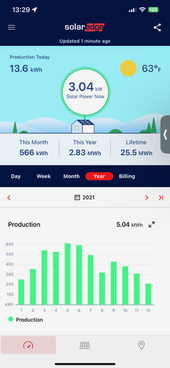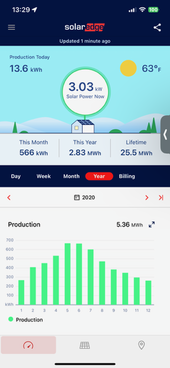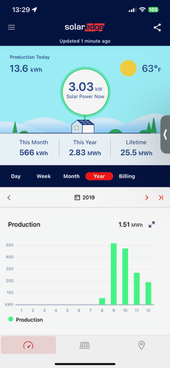Hedges
I See Electromagnetic Fields!
- Joined
- Mar 28, 2020
- Messages
- 21,524
Anti-islanding prevents export when grid goes down.
Zero-export is good enough for places like Hawaii where they can't handle more distributed PV.
But with load-dump, it can't respond fast enough to prevent a second or so of export, and smart-meters tattle on you. A problem only without a net metering agreement.
Since you have a small net-metering agreement, limited-export setting of an inverter can avoid going over your allowed amount, and likely utility won't notice your additional production. Especially if it only supplies 100% of household consumption, looking like you have GT PV and zero loads. If you export 3.7kW for 8 to 10 hours per day, that obviously exceeds what your originally permitted system was capable of. If you export after the sun goes down, obviously you have a battery which they weren't told about.
I'm not sure, but I think up to 100% of production from your original PV system is allowed to export. I think you are allowed to add a system which supplies loads but doesn't export. Don't know the details but I think it involves "PCS", Power Control System, which is one of the columns in California's CEC listing of equipment.
Adding a battery is allowed for existing NEM 2.0, but must be configured so you only backfeed electrons that came from PV, not electrons you drew from the grid. This can let you save mid-day production to backfeed during peak hours when it is worth about 50% more credit.
Zero-export is good enough for places like Hawaii where they can't handle more distributed PV.
But with load-dump, it can't respond fast enough to prevent a second or so of export, and smart-meters tattle on you. A problem only without a net metering agreement.
Since you have a small net-metering agreement, limited-export setting of an inverter can avoid going over your allowed amount, and likely utility won't notice your additional production. Especially if it only supplies 100% of household consumption, looking like you have GT PV and zero loads. If you export 3.7kW for 8 to 10 hours per day, that obviously exceeds what your originally permitted system was capable of. If you export after the sun goes down, obviously you have a battery which they weren't told about.
I'm not sure, but I think up to 100% of production from your original PV system is allowed to export. I think you are allowed to add a system which supplies loads but doesn't export. Don't know the details but I think it involves "PCS", Power Control System, which is one of the columns in California's CEC listing of equipment.
Adding a battery is allowed for existing NEM 2.0, but must be configured so you only backfeed electrons that came from PV, not electrons you drew from the grid. This can let you save mid-day production to backfeed during peak hours when it is worth about 50% more credit.








